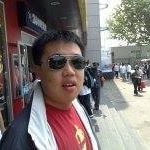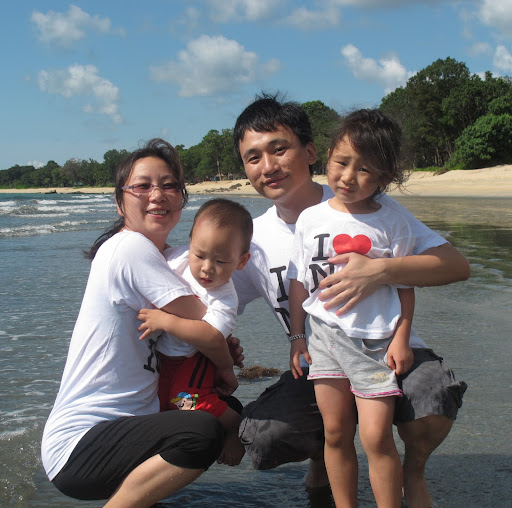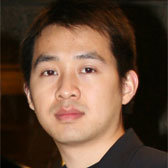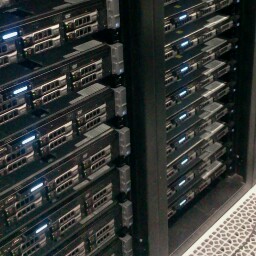Dawei Zhang
age ~37
from San Antonio, TX
- Also known as:
-
- Da Wei Zhang
- Da-Wei Zhang
- Zhang Da-Wei
- Zhang Da Wei
- Phone and address:
- 24442 Us Highway 281 N APT 627, San Antonio, TX 78258
Dawei Zhang Phones & Addresses
- 24442 Us Highway 281 N APT 627, San Antonio, TX 78258
- Longview, TX
- El Paso, TX
- Dallas, TX
- Amarillo, TX
- San Diego, CA
- Austin, TX
- Plano, TX
Us Patents
-
Self-Contained Slot And Slot Duration Configuration In Nr Systems
view source -
US Patent:20220264569, Aug 18, 2022
-
Filed:May 6, 2022
-
Appl. No.:17/738724
-
Inventors:- Cupertino CA, US
Yang Li - Plano TX, US
Yuchul Kim - Santa Clara CA, US
Johnson O. Sebeni - Fremont CA, US
Sami M. Almalfouh - San Jose CA, US
Wei Zeng - San Diego CA, US
Dawei Zhang - Saratoga CA, US -
International Classification:H04W 72/04
H04W 76/10 -
Abstract:Apparatuses, systems, and methods to dynamically indicate preference for self-contained slots and slot duration by a user equipment device (UE) in communication with a base station (e.g., a gNB) using a 5G NR radio access technology. A UE may determine to send an indication to a gNB indicating a preference for self-contained slots and slot duration for downlink and/or uplink communications utilizing one or more of the physical downlink control channel (PDCCH), the physical downlink shared channel (PDSCH), and/or acknowledgement messaging (ACK/NACK) for downlink communications, and utilizing one or more of the physical uplink control channel (PUCCH), the PDCCH, and/or the physical uplink shared channel (PUSCH) for uplink communications. The configuration of self-contained slots and slot duration for uplink and/or downlink may be based on one or more of average packet size, average packet rate, traffic type and UE processing capabilities.
-
Self-Contained Slot And Slot Duration Configuration In Nr Systems
view source -
US Patent:20200404656, Dec 24, 2020
-
Filed:Aug 31, 2020
-
Appl. No.:17/008319
-
Inventors:- Cupertino CA, US
Yang Li - Plano TX, US
Yuchul Kim - Santa Clara CA, US
Johnson O. Sebeni - Fremont CA, US
Sami M. Almalfouh - San Jose CA, US
Wei Zeng - San Diego CA, US
Dawei Zhang - Saratoga CA, US -
International Classification:H04W 72/04
H04W 76/10 -
Abstract:Apparatuses, systems, and methods to dynamically indicate preference for self-contained slots and slot duration by a user equipment device (UE) in communication with a base station (e.g., a gNB) using a 5G NR radio access technology. A UE may determine to send an indication to a gNB indicating a preference for self-contained slots and slot duration for downlink and/or uplink communications utilizing one or more of the physical downlink control channel (PDCCH), the physical downlink shared channel (PDSCH), and/or acknowledgement messaging (ACK/NACK) for downlink communications, and utilizing one or more of the physical uplink control channel (PUCCH), the PDCCH, and/or the physical uplink shared channel (PUSCH) for uplink communications. The configuration of self-contained slots and slot duration for uplink and/or downlink may be based on one or more of average packet size, average packet rate, traffic type and UE processing capabilities.
-
Control Channel For Ue Power Saving
view source -
US Patent:20200229166, Jul 16, 2020
-
Filed:Mar 30, 2020
-
Appl. No.:16/834908
-
Inventors:- Cupertino CA, US
Yang Li - Plano TX, US
Zhu Ji - San Jose CA, US
Yuchul Kim - San Jose CA, US
Wei Zeng - San Diego CA, US
Dawei Zhang - Saratoga CA, US
Haijing Hu - Beijing, CN
Xiangying Yang - Cupertino CA, US
Li Su - San Jose CA, US -
International Classification:H04W 72/04
H04W 76/28
H04W 52/02 -
Abstract:A downlink control information (DCI), such as a blanking DCI (bDCI) message may be transmitted by a base station (e.g., eNB) and received by a mobile device (e.g., UE). The bDCI may indicate that the eNB will not transmit a subsequent DCI to the UE for a duration of time. The UE may be in continuous reception mode or connected discontinuous reception (C-DRX) mode. The UE may therefore determine to enter a sleep state or take other action. The bDCI may specify an explicit blanking duration, or an index indicating a blanking duration from a lookup table, and/or the blanking duration (and/or a blanking duration offset value) may be determined in advance, e.g., semi-statically. When the UE is in C-DRX mode, the UE may be configured such that either the sleep/wake period of the C-DRX mode or the blanking period of the bDCI may take precedence over the other.
-
Self-Contained Slot And Slot Duration Configuration In Nr Systems
view source -
US Patent:20190306856, Oct 3, 2019
-
Filed:Mar 19, 2019
-
Appl. No.:16/357844
-
Inventors:- Cupertino CA, US
Yang Li - Plano TX, US
Yuchul Kim - Santa Clara CA, US
Johnson O. Sebeni - Fremont CA, US
Sami M. Almalfouh - San Jose CA, US
Wei Zeng - San Diego CA, US
Dawei Zhang - Saratoga CA, US -
International Classification:H04W 72/04
H04W 76/10 -
Abstract:Apparatuses, systems, and methods to dynamically indicate preference for self-contained slots and slot duration by a user equipment device (UE) in communication with a base station (e.g., a gNB) using a 5G NR radio access technology. A UE may determine to send an indication to a gNB indicating a preference for self-contained slots and slot duration for downlink and/or uplink communications utilizing one or more of the physical downlink control channel (PDCCH), the physical downlink shared channel (PDSCH), and/or acknowledgement messaging (ACK/NACK) for downlink communications, and utilizing one or more of the physical uplink control channel (PUCCH), the PDCCH, and/or the physical uplink shared channel (PUSCH) for uplink communications. The configuration of self-contained slots and slot duration for uplink and/or downlink may be based on one or more of average packet size, average packet rate, traffic type and UE processing capabilities.
-
Power Efficient Downlink Control Information Framework For Cellular Communication
view source -
US Patent:20190116552, Apr 18, 2019
-
Filed:Sep 24, 2018
-
Appl. No.:16/139404
-
Inventors:- Cupertino CA, US
Yang Li - Plano TX, US
Zhu Ji - San Jose CA, US
Sami M. Almalfouh - San Jose CA, US
Faraz Faheem - Santa Clara CA, US
Jianxiong Shi - Dublin CA, US
Sarma V. Vangala - San Jose CA, US
Sreevalsan Vallath - Dublin CA, US
Haitong Sun - Irvine CA, US
Yuchul Kim - Santa Clara CA, US
Wei Zeng - San Diego CA, US
Dawei Zhang - Saratoga CA, US -
International Classification:H04W 52/02
H04W 72/04
H04L 5/00
H04W 72/14
H04W 76/28
H04W 28/02 -
Abstract:This disclosure relates to performing cellular communication using a power efficient downlink control information framework. A wireless device and a cellular base station may exchange configuration information indicating that the cellular base station and the wireless device support a sleep downlink control information (sDCI) format. An sDCI configuration according to the sDCI format may be negotiated, including selecting at least one sDCI configuration parameter based at least in part on an application type currently associated with cellular communication between the cellular base station and the wireless device. Downlink control information may be provided during one or more subframes in accordance with the sDCI configuration. One or more subframes for which no downlink control information will be provided to the wireless device may be determined based at least in part on the sDCI configuration.
-
Control Channel For Ue Power Saving
view source -
US Patent:20180368112, Dec 20, 2018
-
Filed:Mar 16, 2018
-
Appl. No.:15/923078
-
Inventors:- Cupertino CA, US
Yang Li - Plano TX, US
Zhu Ji - San Jose CA, US
Yuchul Kim - Santa Clara CA, US
Wei Zeng - San Diego CA, US
Dawei Zhang - Saratoga CA, US
Haijing Hu - Beijing, CN
Xiangying Yang - Cupertino CA, US
Li Su - San Jose CA, US -
International Classification:H04W 72/04
H04W 76/28 -
Abstract:A downlink control information (DCI), such as a blanking DCI (bDCI) message may be transmitted by a base station (e.g., eNB) and received by a mobile device (e.g., UE). The bDCI may indicate that the eNB will not transmit a subsequent DCI to the UE for a duration of time. The UE may be in continuous reception mode or connected discontinuous reception (C-DRX) mode. The UE may therefore determine to enter a sleep state or take other action. The bDCI may specify an explicit blanking duration, or an index indicating a blanking duration from a lookup table, and/or the blanking duration (and/or a blanking duration offset value) may be determined in advance, e.g., semi-statically. When the UE is in C-DRX mode, the UE may be configured such that either the sleep/wake period of the C-DRX mode or the blanking period of the bDCI may take precedence over the other.
Resumes

Dawei Zhang
view source
Dawei Zhang Zhou
view source
DaWei Zhang
view source
Dawei Zhang
view source
Dawei Zhang
view source
Dawei Zhang
view source
Dawei Zhang
view source
Dawei Zhang
view source
Dawei Zhang
view sourceFlickr
Myspace
Googleplus

Dawei Zhang
Education:
National University of Singapore

Dawei Zhang
Education:
King's College London - MSc Advanced Computing

Dawei Zhang

Dawei Zhang

Dawei Zhang

Dawei Zhang

Dawei Zhang

Dawei Zhang
Youtube
Get Report for Dawei Zhang from San Antonio, TX, age ~37









